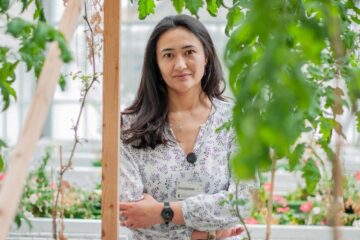Colour Dyes: EU Environmental and Health Concerns addressed at Queen’s

Epidemiological evidence exists to indicate regular and long term use of hair dyes for women can be associated with the development of bladder cancer. During dyeing processes, up to 40 per cent of the dyes are not consumed by the substrate to which they are applied and they then find their ways into wastewaters and are flushed into the environment.
Researchers from QUESTOR, Queen’s Environmental Centre and Europe's only Industry/University Co-operative Research Centre, will be reporting on the latest results from a four year EU-funded flagship research project into reducing the impact of such dyes on our health and the environment.
Known as SOPHIED (Sustainable Bioprocesses for the European Colour Industries), project researchers at Queen’s and their 27 European partners have been actively developing new durable bioprocesses destined to modernise the European Colour Industry.
Explaining the importance of the research to both industry and the general public, Ciaran Prunty, from QUESTOR’s Applied Technology Unit said: “Colour dyes are not something that often crop up in many people’s list of environmental and health concerns. However, almost all of the clothes and fabric that surround us have been treated with colour dyes and many of us also use dyes to colour our hair.
“The global dyestuff market produces around 1.15 million tonnes per year and generates sales of almost €5 million. It is heavily influenced by global production trends such as the shift in production of textiles to low labour cost countries. Indeed, Chinese dyestuff production now accounts for half of the total production in the world.
“For EU residents therefore, research projects such as SOPHIED are vital in providing intelligence in order to help reduce the implications of toxicity and other issues. Traditionally weaker than other sectors in research and development, the results from QUESTOR and the other partner institutions, which will be discussed at this week’s conference, will provide a shot in the arm for the dyestuff industry and pave the way for the use and development of greener technologies.”
Within the SOPHIED project, QUESTOR has a significant role in the delivery of the development of new bioremediation technology for decolouring dye wastewater.
Further information on the SPOHIED project can be found at http://www.sophied.net/ while further information on the work which takes place at QUESTOR can be found at http://questor.qub.ac.uk/newsite/index.htm
Media Contact
More Information:
http://www.qub.ac.ukAll latest news from the category: Ecology, The Environment and Conservation
This complex theme deals primarily with interactions between organisms and the environmental factors that impact them, but to a greater extent between individual inanimate environmental factors.
innovations-report offers informative reports and articles on topics such as climate protection, landscape conservation, ecological systems, wildlife and nature parks and ecosystem efficiency and balance.
Newest articles

How the Immune System Learns from Harmless Particles
Our lungs are bombarded by all manner of different particles every single day. Whilst some are perfectly safe for us, others—known as pathogens—have the potential to make us ill. The…

Biomarkers identified for successful treatment of bone marrow tumours
CAR T cell therapy has proven effective in treating various haematological cancers. However, not all patients respond equally well to treatment. In a recent clinical study, researchers from the University…

She deciphers how tomato roots communicate
Ora Hazak has always been fascinated by plants and is studying the signals that roots send to the rest of the organism. She aims to understand this communication in order…





















